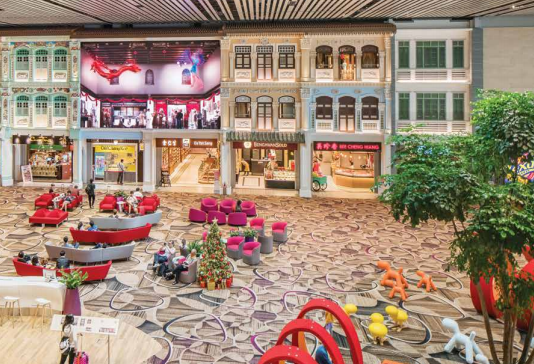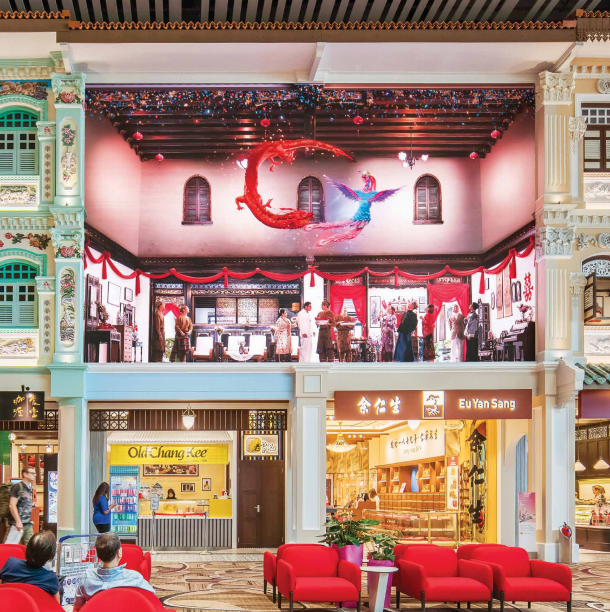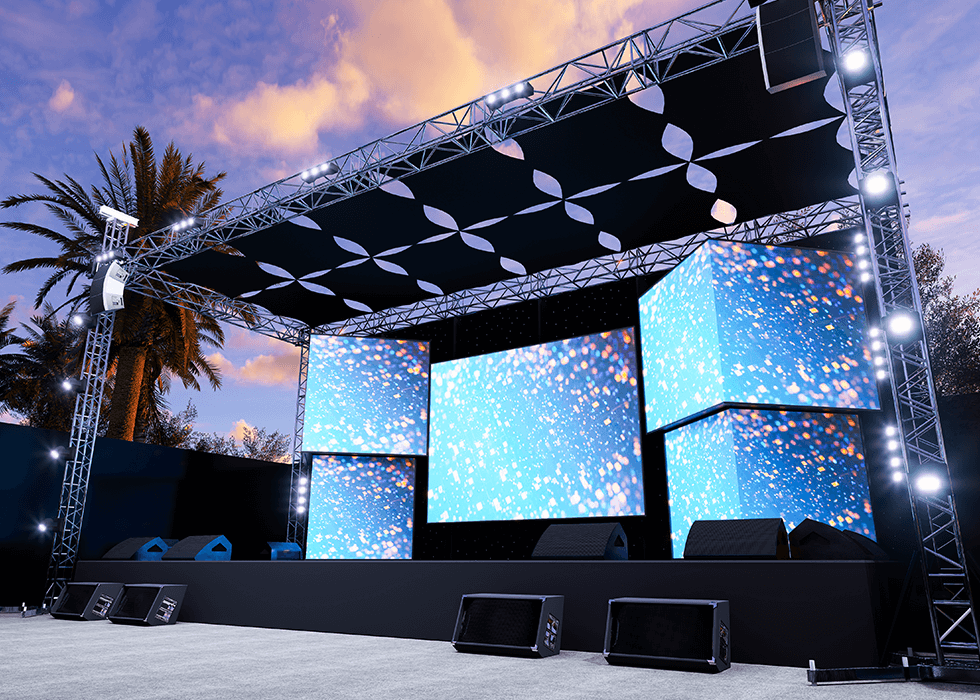Singapore’s Changi: Multimedia Experience Shapes Modern Travel at “World’s Best Airport”
Transportation centers are built to efficiently get travelers to their destinations, and audiovisual technology has long provided a fundamental yet important service, from wayfinding, to digital signage, to flight information displays. However, this is only part of the AV story for transportation hubs today.
More and more airports and train terminals count on AV not only to communicate essential information but also to immerse, relax, and delight passengers. Behind some of these technology-enabled experiences are AV specialists and content creators coming together to stretch the imagination of modern travels in unexpected ways.
In the AVIXA white paper The Evolution of Audiovisual Experiences in Transportation, Singapore’s Changi Airport provides an outstanding case study for how an airport can double up into an experiential attraction, surprise travelers, and boost the venue’s bottom line.
 Changi Airport Heritage Zone (Credit: Moment Factory/Changi Airport)
Changi Airport Heritage Zone (Credit: Moment Factory/Changi Airport)
Prioritizing Passenger Experience From the Start
With more than 60 million passengers a year flying to nearly 400 global destinations, Changi Airport is one of the busiest in the world and is frequently named by Skytrax as “World’s Best Airport.”
Understanding that the airport is generally the first and last thing visitors see when they come to Singapore, Changi’s Airport Management Division recruited a designated Experience team that brings a passenger-centric approach to constantly improve its environment and features. For its new Terminal 4, from project inception Changi set its sight on pushing the bar further with expanded opportunities to inform, engage, and entertain.
Space, Technology, and Content Coming Together
Visitors going through the security screening area in the bright and inviting Terminal 4 are immediately drawn to the Immersive Wall. This LED display, 230 feet wide and 33 feet high, engages travelers during the normally tedious security screening process. Through unique, immersive animations provided by Montreal-based multimedia studio Moment Factory, the Immersive Wall dramatically changes the ambiance of the space.
“The objective was to totally transform even the least appreciated traveler moments, like security, into times of delight and discovery,” says Sakchin Bessette, co-founder and executive creative director of Moment Factory.
As the wide LED screen is right above the new X-ray machines, the contracted installation firm Electronics & Engineering Pte Ltd worked closely in sequence with the X-ray installation team to ensure the process happened smoothly with no interruption or surprises.
Another media installation also supported by Moment Factory is located in the airport’s Heritage Zone. It celebrates Singapore’s traditional Peranakan culture and ‘shophouse’ architecture of the 1900s.
The airport has made significant investment in innovative content for these displays. For example, one of the clips shown regularly on the Immersive Wall, called the Fresco, simulates a three-dimensional sculpture of a carved stone. The piece draws viewers in when a butterfly takes to the air or an elephant slowly turns its head, and when the visuals transition gracefully into a totally new series of animations.
 Changi Airport Heritage Zone (Credit: Moment Factory/Changi Airport)
Changi Airport Heritage Zone (Credit: Moment Factory/Changi Airport)
Smart Airport Makes Traveling Efficient
Besides experiential entertainment, essentials are just as important for a pleasant journey. Changi leans on technology to help speed travelers through the usual bottlenecks. It uses automation to check in travelers for their flights, as well as to check in their luggage. Large LED displays offer detailed flight information, but if travelers need human interaction, they can talk to a customer representative as well.
By addressing traditional airport pain points, technology helps make the airport visit speedier and stress free. This way travelers have more time and energy to explore the rest of the airport. When happy, relaxed customers spend more on food and retail goods in the terminal, the airport’s profits grow.
Ingredients for an AV-Enhanced Gateway to Singapore
To create the most integrated experience possible at Changi, having the right equipment is a key ingredient but it is only a piece of the puzzle. Designing for flexibility, the project team says, is necessary to maximize potential of the space and allow for continued innovation. “Considering that new technology is regularly introduced into the marketplace, we can’t rely solely on the tech, as it quickly becomes outdated and stale,” says Bessette.
Moment Factory adds that close and trusting collaboration is crucial for bringing creative multimedia visions to life. Seamless cooperation needs to start from conception to commissioning, and among all stakeholders including marketing, IT, and operations from the client side, as well as technology suppliers, regulatory consultants, and the design team.
“We need to be involved at the early stages of the design process,” adds Bessette. “This is key to get seamlessly integrated multimedia features within architecture and space. It also gives us better risk mitigation and cost control.”
Gary Goh, deputy managing director of Electronics & Engineering Pte Ltd adds: “To pre-empt possible risks in a project scale not seen before in Singapore, it takes mutual understanding and close collaboration with project partners.”
For more examples of how AV improves passenger experiences, read AVIXA white paper The Evolution of Audiovisual Experiences in Transportation.
Moment Factory
Website
Moment Factory is a multimedia studio with a full range of production expertise under one roof. The team combines specializations in video, lighting, architecture, sound and special effects to create remarkable experiences. With its headquarters based in Montreal, the studio also has offices in Los Angeles, Tokyo, London, New York City and Paris. Since its inception in 2001, Moment Factory has created more thzan 400 unique shows and destinations. Productions span the globe and include such clients as Los Angeles Airport, Nine Inch Nails, Microsoft, NFL, Sony, Toyota, the Sagrada Familia in Barcelona, Madonna and Royal Caribbean.
Electronics & Engineering Pte Ltd
Website
Electronics & Engineering Pte Ltd, established in 1951, is a leading specialist contractor, consultant and systems integrator, and audiovisual equipment distributor. Electronics and Engineering Pte Ltd has supported many prestigious installations, including the National Theatre, Singapore Indoor Stadium, Esplanade, Theatres on the Bay, The Marina Bay Sands Integrated Resort & Convention Centre (MBS), Gardens by the Bay Supertrees & Conservatories, and the iconic Singapore Sports Hub.





